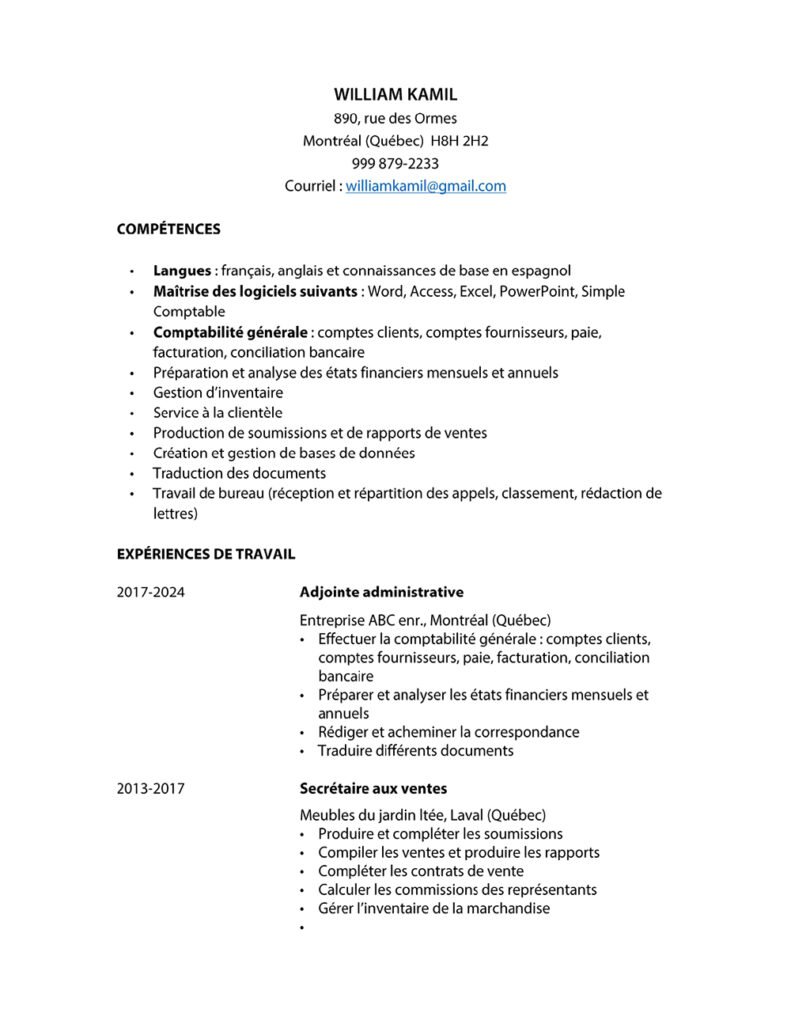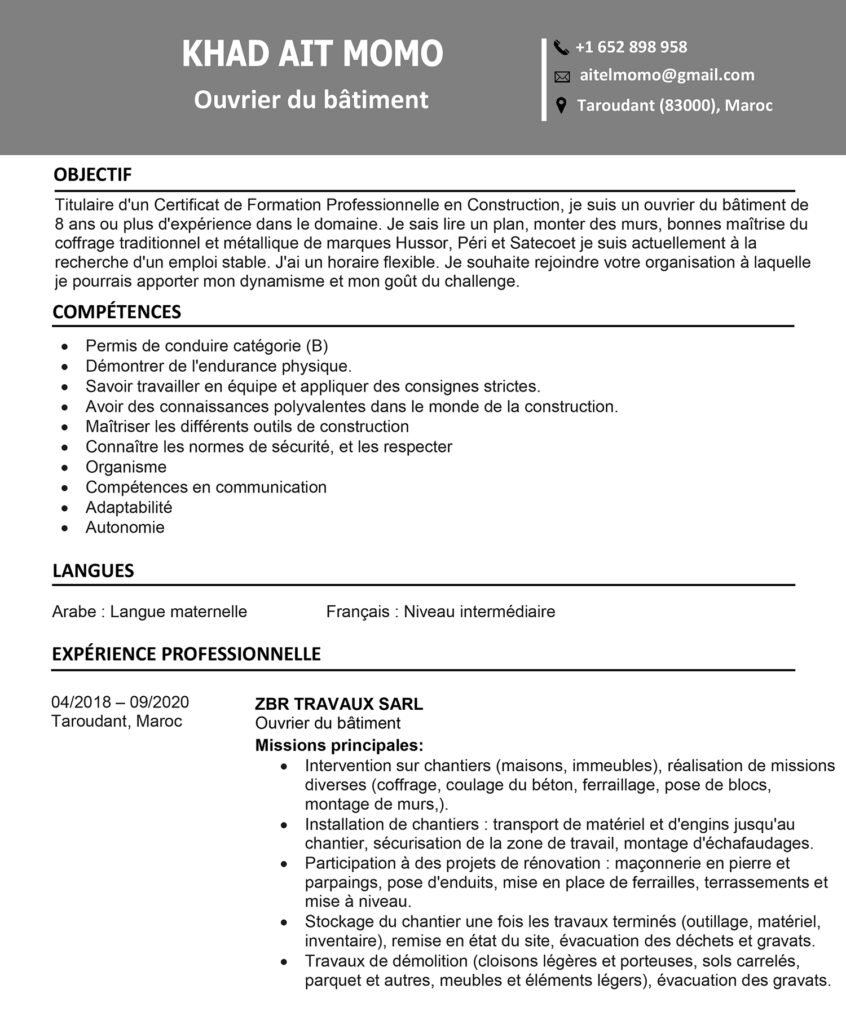Introduction
In the competitive landscape of the Canadian job market, a well-crafted resume is your passport to opportunity. This comprehensive review delves into the intricacies of Canadian resumes, offering insights into the format, content, and strategies that can elevate your chances of landing your dream job.
Quick Summary: Navigating the Canadian job market requires more than just the right qualifications; it demands a tailored and compelling resume. From understanding the Canadian resume format to crafting effective objective statements and highlighting relevant skills, this review covers every aspect of creating a resume that stands out. We’ll explore common pitfalls to avoid, provide practical formatting tips, and even present samples to guide you in the right direction.

1. Overview of Canadian Resumes
Importance of a Well-Crafted Resume: In Canada, your resume serves as your first impression on prospective employers. A well-crafted resume not only showcases your qualifications but also reflects your professionalism and attention to detail. It is a crucial tool in securing a job interview, making it imperative to understand and adhere to Canadian standards.
Canadian Resume Format: Canadian resumes differ from those in other countries. They typically follow a reverse chronological format, emphasizing your most recent experiences. While concise, they are comprehensive, touching on key elements such as education, work experience, skills, and certifications. Understanding this format is fundamental to presenting your information effectively.
Tailoring Resumes to Canadian Standards: Tailoring your resume to Canadian standards involves more than adjusting the format. It requires aligning your content with the expectations of Canadian employers. This includes emphasizing soft skills, quantifying achievements, and showcasing adaptability, a quality highly valued in the Canadian workplace.

2. Creating an Effective Canadian Resume
Contact Information: The header of your Canadian resume should include your full name, phone number, email address, and LinkedIn profile. Avoid including unnecessary personal details like age or marital status, as these are not standard in Canadian resumes.
Objective Statement: Begin your resume with a concise objective statement that outlines your career goals and how they align with the position you’re seeking. This section should capture the employer’s attention, making them eager to delve deeper into your qualifications.
Education Section: Highlight your educational background, starting with your most recent degree. Include the institution’s name, degree earned, field of study, and graduation date. If you have relevant certifications or coursework, consider incorporating them here.
Work Experience: Detail your work experience in reverse chronological order. Use action verbs to start each bullet point and focus on quantifiable achievements. Canadian employers value results-oriented individuals, so emphasize the impact you’ve had in previous roles.
Skills Section: Create a dedicated section to showcase your skills. Include both hard skills (technical abilities) and soft skills (communication, teamwork, adaptability). Tailor this section to align with the job description, emphasizing skills that are particularly relevant to the position.
Certifications: List any relevant certifications or licenses you hold. Ensure you include the name of the certification, the issuing organization, and the date earned. Certifications can enhance your credibility and demonstrate your commitment to ongoing professional development.
Volunteer Experience: Highlighting volunteer experience is encouraged in Canadian resumes, as it demonstrates your commitment to community involvement and showcases additional skills. Describe your role, responsibilities, and any notable achievements.
Achievements: Devote a section to noteworthy achievements. This can include specific projects, awards, or recognitions. Quantify your accomplishments wherever possible to provide a tangible measure of your success.
Professional Memberships: If you belong to any professional associations relevant to your field, include them in this section. Membership in industry-specific organizations can enhance your credibility and demonstrate your commitment to staying current in your field.

3. Formatting and Style
Clarity and Readability: Ensure your resume is easy to read by using a clear and legible font. Maintain consistent formatting throughout the document, with sufficient spacing between sections. Break up dense text with bullet points for easy skimming.
Use of Action Verbs: Start each bullet point in your work experience and achievements sections with strong action verbs. This not only adds impact to your statements but also conveys a sense of proactiveness and achievement.
Consistent Formatting: Maintain a consistent format in terms of font, bullet point style, and section headings. A visually cohesive resume reflects attention to detail and professionalism. Choose a clean and professional layout that aligns with your industry.
Length Considerations: While Canadian resumes tend to be more detailed than resumes in some other countries, it’s essential to strike a balance. Aim for a length of 1-2 pages, focusing on the most relevant and impactful information. Be concise without sacrificing essential details.
4. Common Resume Pitfalls to Avoid
Generic Resumes: Avoid using a generic, one-size-fits-all resume. Tailor your resume for each job application by emphasizing the skills and experiences most relevant to the specific position. Generic resumes can appear disinterested and may not effectively showcase your qualifications.
Irrelevant Information: Be selective in the information you include. Exclude details that are not directly relevant to the job you’re applying for. Focus on what makes you the ideal candidate for the specific role rather than providing an exhaustive list of every experience.
Excessive Detail: While detail is crucial, excessive information can overwhelm the reader. Stick to the most relevant points and prioritize achievements and responsibilities that directly align with the job requirements. Remember, your resume is a snapshot, not an autobiography.
Spelling and Grammar Errors: Proofread your resume thoroughly to catch any spelling or grammar errors. Errors can undermine your professionalism and attention to detail. Consider using tools like grammar-check software and, if possible, have a second set of eyes review your resume.

5. Conclusion: Navigating the Canadian Job Market with a Stellar Resume
Crafting Your Path to Success: In conclusion, mastering the art of crafting a Canadian resume is a crucial step toward navigating the competitive job market successfully. Your resume is not just a document; it’s your personal marketing tool. By adhering to the Canadian format, showcasing your achievements, and avoiding common pitfalls, you can create a compelling narrative that captures the attention of employers.
6. FAQs on Canadian Resumes
Q1: How important is tailoring my resume to the Canadian format? A1: Tailoring your resume to the Canadian format is highly important. It not only adheres to local standards but also demonstrates your understanding of the Canadian job market, making you a more attractive candidate.
Q2: Can I include hobbies and personal interests on my resume? A2: While it’s not a strict requirement, adding a brief section on hobbies and personal interests can provide a glimpse into your personality. However, prioritize professional information, and ensure your hobbies align with the job culture.
Q3: Should I submit a cover letter with my resume? A3: Yes, submitting a cover letter is generally recommended. A well-crafted cover letter allows you to introduce yourself, express your interest in the position, and highlight specific qualifications that make you an ideal candidate.
Q4: How far back should I go in detailing my work experience? A4: Focus on the most recent 10-15 years of work experience, emphasizing positions and achievements that are directly relevant to the job you’re applying for. Older experiences can be summarized without excessive detail.
Q5: Is it necessary to translate my resume into French for jobs in bilingual regions? A5: In bilingual regions like Quebec, translating your resume into French can be advantageous. While it’s not always a strict requirement, it demonstrates respect for the local culture and increases your accessibility to a broader range of employers.



